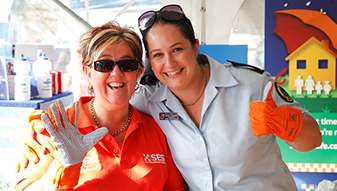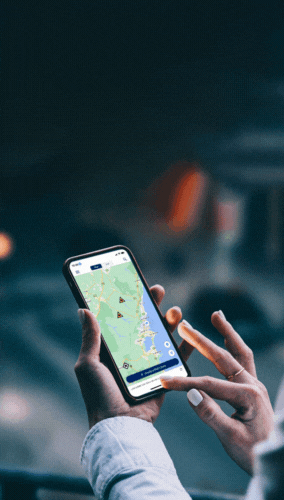Mobility Impaired
Many people across NSW are affected by dangerous tsunamis and there have been avoidable deaths due to tsunamis. The protection of life is the highest priority for the NSW SES when we make decisions about planning for tsunami.
People with impaired mobility can be more susceptible to the impacts of tsunamis. It is important to care for and assist all people to be prepared for, respond to and recover from tsunami.
Identifying a support person or carer who can assist with planning for and response to tsunamis can greatly increase the resilience of people with impaired mobility to recover faster from tsunami events.
If you care for a person with limited mobility, they may need assistance in planning for tsunami as well as putting that plan into action in times of tsunami.
Some ways of assisting mobility impaired people with tsunami planning may include:
- Think about any mobility support equipment in planning and responding to tsunami events
- Utilise a care or support person to develop a Home Emergency Plan that suits your situation
- Set up a network of support with family, friends, co-workers, neighbours, carers, etc. who can assist you during an emergency. It is important that your network takes part in your planning and be familiar with your functional abilities and limitations
- If you use an Occupational Therapist or are on an Attendant Care Package ask your provider for assistance and information on the emergency plan as this is a requirement for funding
- Talk to local council and emergency services about what support can be provided to you in case of an emergency
- Speak to the fire wardens in your work place and ask about the emergency plan for wheelchair evacuations. Ensure there is a workable plan in place for your requirements if there isn’t, speak to your human resources and the building manager to request a workable plan
- Be ready to go early - pack and store all emergency kit items (including medications, medical supplies and/or assistive devices) in an easy-to-access and easy-to- transport bag should you need to evacuate. Ensure you inform your network of where you keep your emergency kit
- Prepare a list of any food or drug allergies you might have and all the medications you are taking
- Provide written instructions for your network on how best to assist you and your assistance dog (if applicable) during an emergency
- Since your medications, assistive devices, etc. may change over time, it is advisable for you to regularly assess your needs and incorporate any changes to your emergency survival kit supplies and your emergency plan
- If you rely on any life sustaining equipment, develop an emergency back-up plan that will ensure the equipment works in the event of a power outage
- Label your special needs equipment and attach a laminated instruction cards on how to use, retrieve and/or move each assistive device during an emergency. This information should be updated as your equipment or needs change
- If during an emergency your support network cannot assist you for whatever reason, ask other individuals around you to help you. Remember to inform them of your special needs and how they can best offer assistance
- There may be instances where you may need to leave your wheelchair behind in order to evacuate safely. Familiarise yourself with lifting and carrying techniques that will work for you. Alert rescue personnel to any areas of vulnerability you may have. For example, the traditional "fire fighter's carry" may be hazardous for people with respiratory weakness. You need to be able to communicate brief instructions regarding how to move you. Providing diagrams on safe lifts may help in communicating instructions on how to move you in circumstances where you have to leave your wheelchair
- Practice your emergency plan with your network at least twice a year. It is important that you practice your plan both during the day and at night, when the conditions can vary
- Keep access ways free of furniture or household items so not obstruct a quick exit
- Keep all information updated and current. Any changes to your emergency plans should be relayed to your support network
For wheel chairs, consider
- A patch kit and pump to repair flat tyres – extra supply of inner tubes
- Heavy gloves to use while wheeling or making your way over glass or debris
If motorised wheel chair, consider:
- An extra charged battery or car battery
The advice above was developed in partnership with ParaQuad NSW
TsunamiSafe information on what to do before, during and after a tsunami is relevant for people with impaired mobility. A support person can run through the advice and tips for these areas with the person and assist in preparing, responding and recovering from tsunamis.
Click here for more advice on what to do when a tsunami Warning is issued



